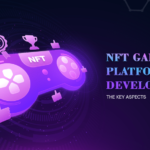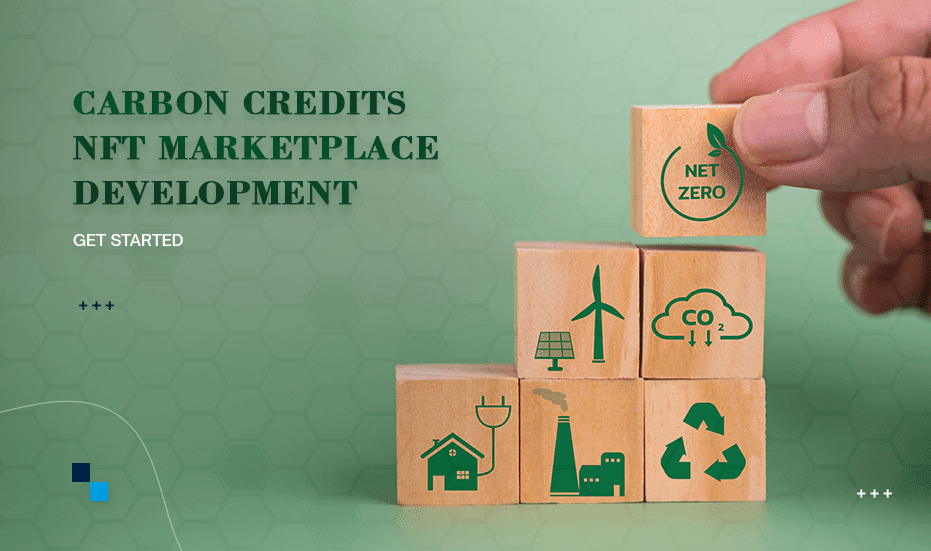
How are NFTs Disrupting the Gaming Industry?
September 27, 2022
Crypto Market Maker Exchange: An Institutional Evolution Of Ecosystem
September 27, 2022At present environmental concerns plague the crypto industry as well as the world at large. Over the last couple of years, the global market for carbon offsets has shown no sign of slowing down. According to a recent report, the carbon offset market size has grown from $306 Million in 2020 to $1 billion in 2021. Analysts expect this number to touch $35 billion by 2030. As the market size continues to grow, it continues to throw unique challenges in the verification and enforcement of carbon offsets. Interestingly, blockchain tokenization of carbon offsets offers answers to some of these challenges and Carbon Credits NFT Marketplaces address the illiquidity issues.
What is a Carbon Credit NFT?
Carbon credits minted as Non-fungible are slowly gaining traction in regenerative finance (ReFi) and decentralized finance (DeFi) markets. Recently, a carbon credit that represented a single tonne of carbon dioxide was sold as an NFT for $70,000 at an auction. Anyway, what is a carbon credit NFT and how does a Carbon Credits NFT Marketplace create one?
A Carbon Credit NFT is minted like any other NFT minting platform which enables carbon offset holders to mint their credits into NFTs. In simple words, the carbon credit records are digitally locked into an NFT. These platforms generally use low-emission blockchain networks like Polygon to mint carbon NFTs which can then be listed for trading on a Carbon Credits NFT Marketplace or generic NFT marketplaces like OpenSea or Rarible.
One of the Ethereum token standard that is used to create Carbon Credit NFTs is ERC1155. It combines both fungible and non-fungible smart contracts to support the minting of limited edition NFTs. As ERC1155 is an optimized token standard, it enables gas-efficient carbon credit transactions that are secure, liquid, and immune to hacking.
How does Carbon Credit NFT and NFT marketplace help the carbon markets?
Before we understand how Carbon Credit NFTs are helping the market, let’s first understand what is a carbon credit. A carbon credit is a permit that allows an organization to produce a certain amount of carbon emission. If the full allowance is not used, it can be traded.
The traditional carbon markets have been centralized and illiquid thus the market participation is limited. However, with Carbon Credits NFT Marketplace Development, things are changing.
1. NFTs Prevent Greenwashing
Carbon market trading is facing the challenges of greenwashing where organizations are cheating on emission tests. All the data available in traditional green markets is inaccurate and unreliable. However, NFTs offer a transparent and distributed technology to keep a track of all the transactions and give carbon credit buyers a detailed history of record that they can trust.
2. Double Counting Eradication
A very common situation that occurs in carbon credit markets is that two organizations claim the same emission reduction or carbon removal. This leads to many disputes in the market. Using NFTs, this problem can be eradicated and we can see more participation by organizations.
3. Effective Liquidity
Carbon credits are illiquid assets for any organization – meaning it is not easy to quickly sell your carbon credits. Relative to Carbon Credits, Carbon Credit NFTs are more liquid. With Carbon Credits NFT Marketplace, these NFTs get quick access to liquid capital.

Steps for creating Carbon NFTs
Before a Carbon Credits NFT Marketplace Development company supports the sales of carbon credits as NFTs, the carbon emission data needs to be properly processed.
In the real Carbon market, there is a cost for emitting carbon. Thus different pricing mechanisms are used and this is where NFTs can play a very important role.
Carbon Pricing Mechanisms
- Carbon Tax – Used by Governments to tax organizations based on their carbon contribution.
- Emission Trading System (ETS) – ETS uses two programs Cap and Trade and Baseline Credit System to track the carbon credits. At this point, NFTs can be integrated into the existing system. The carbon credits details can be stored in the NFT and then organizations can sell their excess credits to other organizations in a Carbon Credits NFT Marketplace.
What should be the features of a Carbon Credits NFT Marketplace?
Using Carbon Credits NFT Marketplace Development Services, the marketplace must be capable of enabling the following functions:
- NFT Buying
The platform must enable buying of carbon credit NFTs by other organizations. The platform must have advanced search options for easy selection of NFTs to be bought.
- NFT Selling and minting
Organizations that intend to sell their excess carbon credits as NFTs should be able to mint NFTs on the blockchain of their choice and should be able to list them on the platform.
- NFT Staking
Organizations should be able to stake their carbon credit NFTs so that they can earn passive income on these NFTs until they are sold on Carbon Credits NFT Marketplace.
Wrapping it up
Antier is a team of over 100 expert blockchain developers with over years of development experience. Want to develop your own Carbon Credits NFT Marketplace? Contact Antier to meet all your Carbon Credits NFT Marketplace Development needs!!



